The Blood and Mud in the Philippines, Section 1.2
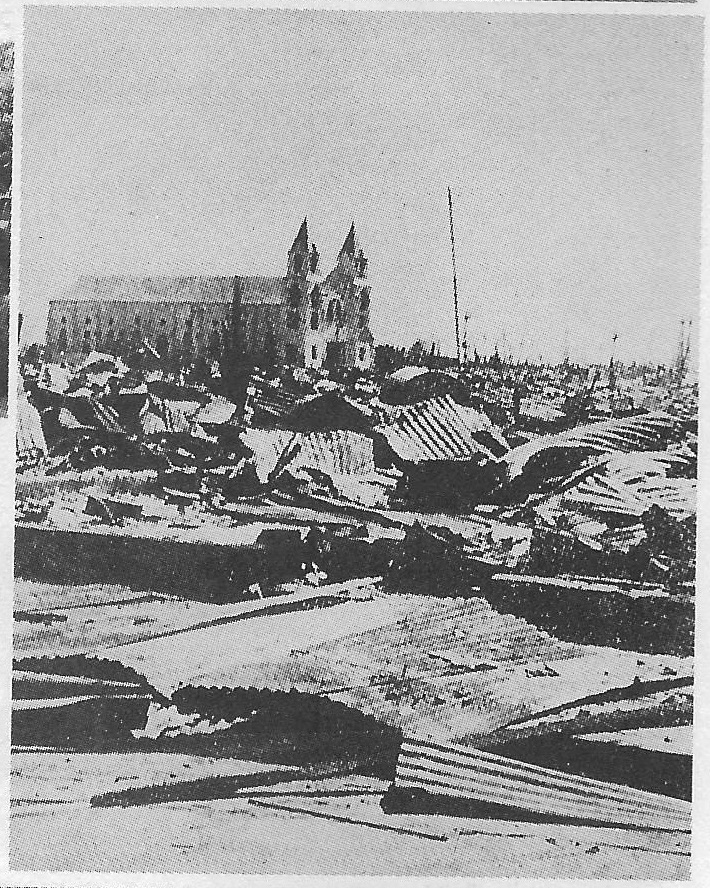
Ruins of Iloilo City resulting from the USAFFE's scorched-earth tactics around Sta. Teresita church.
The Blood and Mud in the Philippines
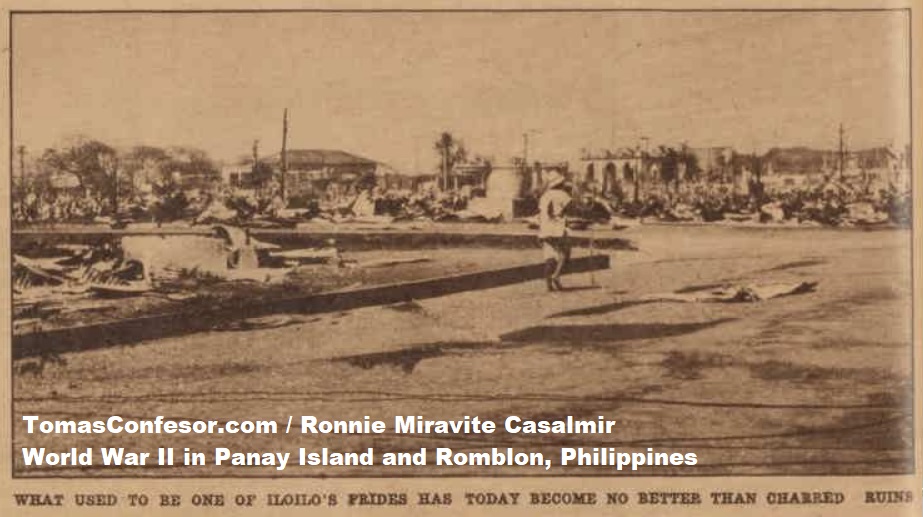
What used to be one of Iloilo's prides has today become no better than charred ruins.
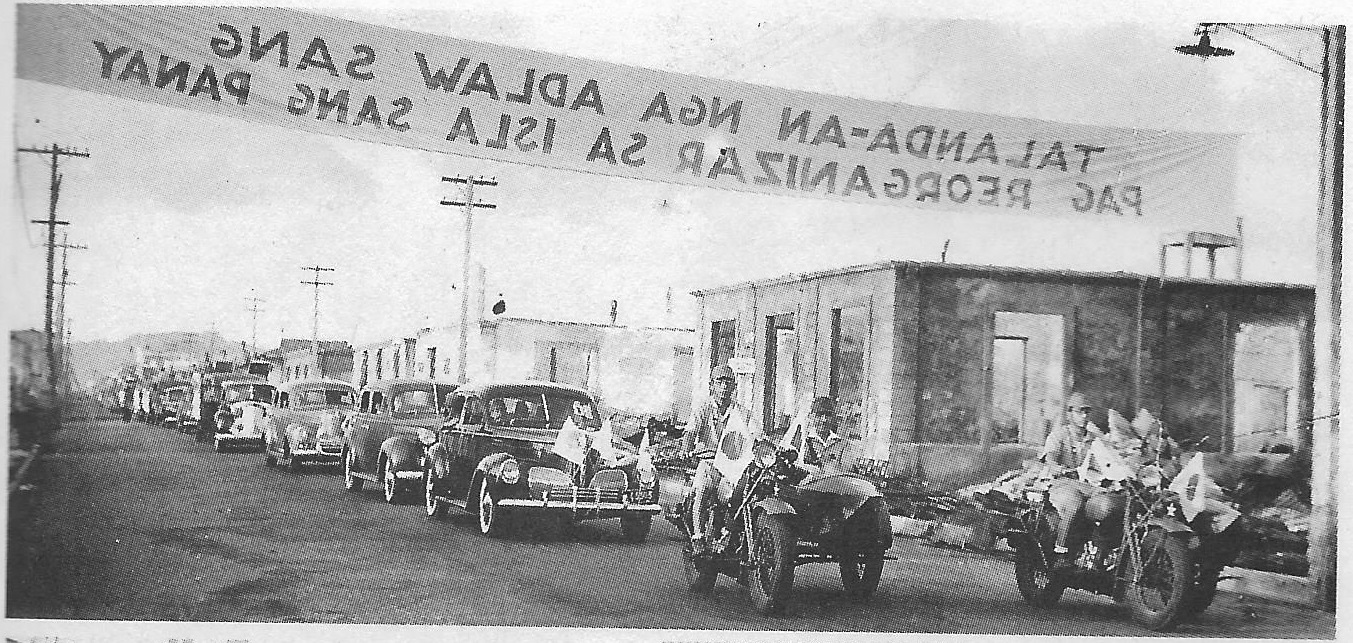
The ruins of Iloilo City
The Japanese Army proclaims the establishment of military administration over the whole island of Panay. A parade was held in Iloilo City.
The Blood and Mud in the Philippines
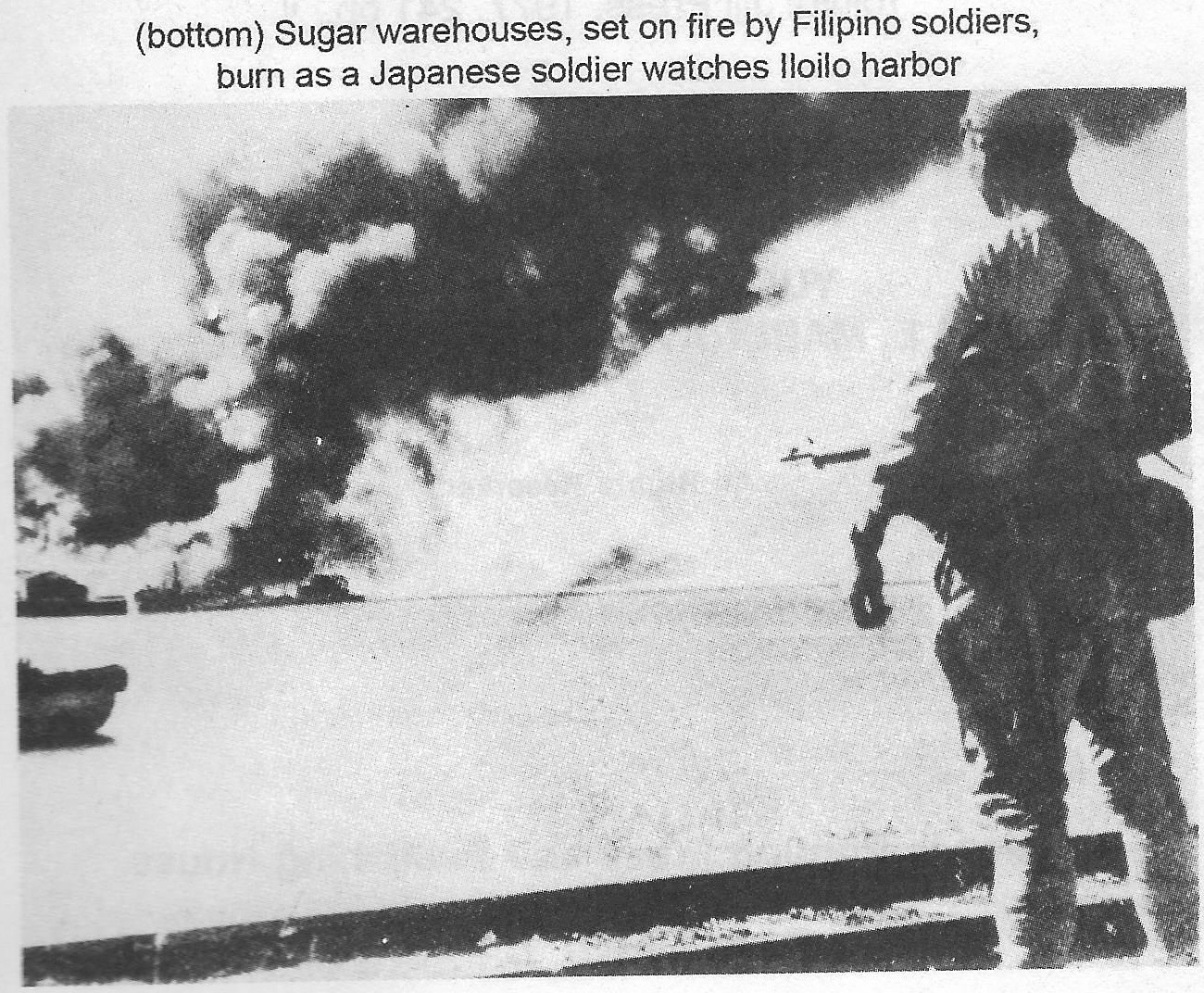
Sugar warehouses, set on fire by Filipino soldiers, burn as a Japanese soldier watches Iloilo Harbor.
The Blood and Mud in the Philippines
Finally, after having blown up the bridge that separated Jaro and La Paz from the city, they retreated into the mountains inland.
The Blood and Mud in the Philippines, Section 1.2
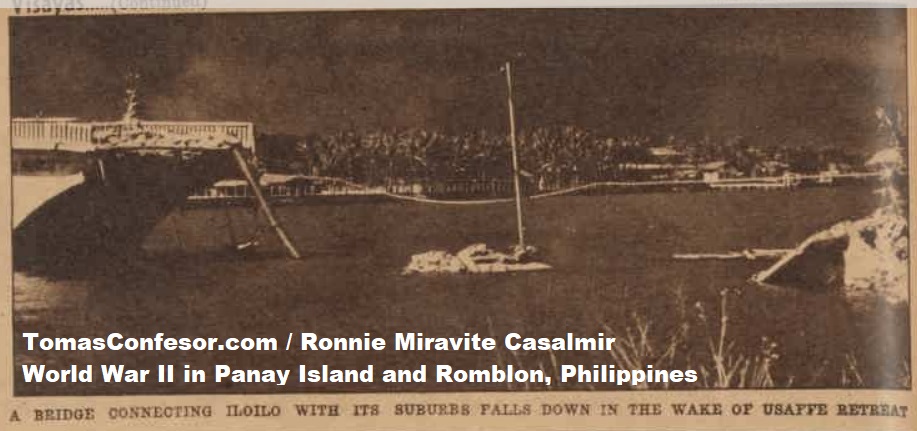
A bridge connecting Iloilo with its suburbs falls down in the wake of USAFFE retreat.
Amidst the smoke and fire, local residents evacuated from the city in great confusion. Poor residents who remained became violent looters and bandits, breaking into and ransacking residences and shops in Chinatown, before eventually withdrawing from the city.
The Blood and Mud in the Philippines, Section 1.2
The central area of Iloilo City that included the Chinese business district was razed and was still burning (when the Japanese entered Iloilo City morning of April 16, 1942). The fire was likely to spread further and no one could do anything to stop it. Burnt electrical posts and wires lay on the roads, making it impossible for vehicles to pass. Fire had consumed the warehouses along the waterfront and the acrid smell of the scorched sugar scattered over the road filled the air.
The Blood and Mud in the Philippines, Section 1.2
When the Japanese forces gathered in front of the church by the city’s plaza, the soldiers shouted three cheers (banzai) while the city was engulfed in dazzling flames, dark smoke and the sweet sour odor of burnt sugar. There were no electric lights, no water in the city of Iloilo that night.
The Blood and Mud in the Philippines, Section 1.2

